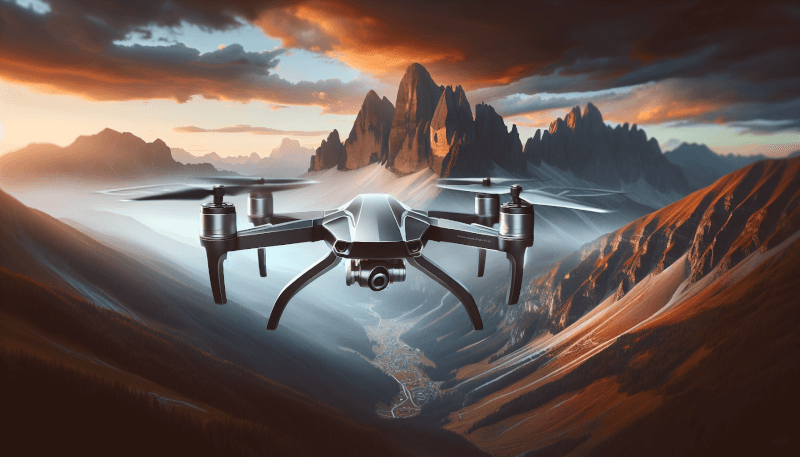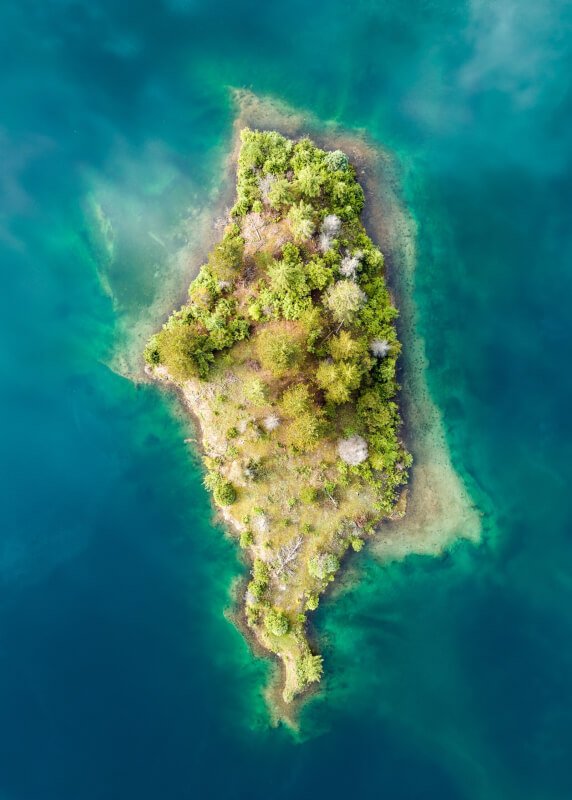Looking to elevate your photography and videography game? Look no further! This article will guide you through the process of choosing the best drone for capturing stunning aerial images and videos. Whether you’re a professional photographer or an enthusiastic hobbyist, we’ve got you covered. From considering flight capabilities to camera specifications, we’ll help you make an informed decision to ensure your creations soar to new heights. So, get ready to take your visual storytelling to the next level with the perfect drone companion. Let’s embark on this exciting journey together!
Factors to Consider
When choosing the best drone for photography and videography, there are several factors to consider that will help you make an informed decision.
Budget
One of the first things you need to consider is your budget. Drones range in price from affordable toy drones to professional-grade models that can cost thousands of dollars. It’s important to establish a budget that suits your financial situation and look for options within that range.
Skill Level
Another important factor to consider is your skill level as a drone pilot. If you’re just starting out, it’s recommended to choose a drone that is easy to fly and has beginner-friendly features like altitude hold and automatic flight modes. On the other hand, if you have advanced piloting skills, you may want a more complex drone that offers more control options and customization.
Purpose
Consider the purpose of your drone. Are you primarily interested in aerial photography or videography? Are you looking for a recreational drone for fun flights? Understanding your main purpose will help you prioritize the features that are most important to you.
Camera Quality
The camera quality of a drone is a significant factor, especially if you’re using it for photography and videography. Look for drones that have high-resolution cameras capable of capturing detailed images and videos. Consider the sensor size, megapixel count, and image stabilization features for smooth footage.
Flight Time
Flight time refers to the duration a drone can stay in the air on a single battery charge. Longer flight times are generally preferred, especially for professional use, as it allows for extended shooting sessions. Keep in mind that flight time can vary depending on factors such as battery capacity, payload, and weather conditions.
Flight Range
Flight range refers to the maximum distance a drone can fly from the remote controller before losing connection. If you need to cover larger areas or capture distant subjects, a drone with a longer flight range would be advantageous. However, be aware of local regulations and ensure you always maintain visual line of sight with your drone.
Control System
Consider the control system of the drone. Some drones use dedicated remote controllers with physical joysticks, while others can be flown using smartphone apps or even gesture control. Think about your personal preference and the level of control you desire when choosing a drone with the right control system for you.
GPS/Geofencing
GPS capability is a useful feature that enables drones to maintain their position and altitude more accurately. It also allows for advanced flight modes like waypoint navigation and follow me mode. Geofencing is another important function, which helps prevent unauthorized flights by restricting drones from entering restricted or no-fly zones.
Obstacle Avoidance
Drones equipped with obstacle avoidance technology use sensors to detect and avoid obstacles in their flight path. This feature is particularly important for ensuring the safety of your drone and preventing costly accidents. Consider whether you require obstacle avoidance capabilities, especially if you plan to fly in complex environments.
Portability
Portability is another factor to consider, especially if you plan to take your drone with you on adventures or travel. Look for drones that are lightweight, compact, and easy to transport. Folding drones, such as the DJI Mavic series, are particularly popular for their compact size when folded and their ease of portability.
Types of Drones
When it comes to drones, there are various types available, each suited for different purposes and skill levels. Let’s explore some of the main types of drones:
Toy Drones
Toy drones are affordable, small-sized drones that are designed for recreational use. They usually come with basic features and may not have high-end camera capabilities. Toy drones are great for beginners and casual users who want to experience flying a drone without making a significant investment.
Consumer Drones
Consumer drones are a step up from toy drones and offer more advanced features and capabilities. They often have better camera quality, longer flight times, and more stability. Consumer drones are suitable for hobbyists, enthusiasts, and those looking to take aerial photography and videography to the next level.
Prosumer Drones
Prosumer drones are a mix between consumer and professional-grade drones. They cater to individuals who want high-quality camera capabilities and advanced flight features but are not necessarily using drones for commercial purposes. Prosumer drones are often used by freelance photographers and videographers.
Professional Drones
Professional drones are top-of-the-line models designed for commercial use and aerial photography/videography professionals. They offer the highest quality cameras, advanced flight features, and often have higher payload capacities. Professional drones are suitable for filmmakers, surveyors, and other professionals who require exceptional image quality and control.
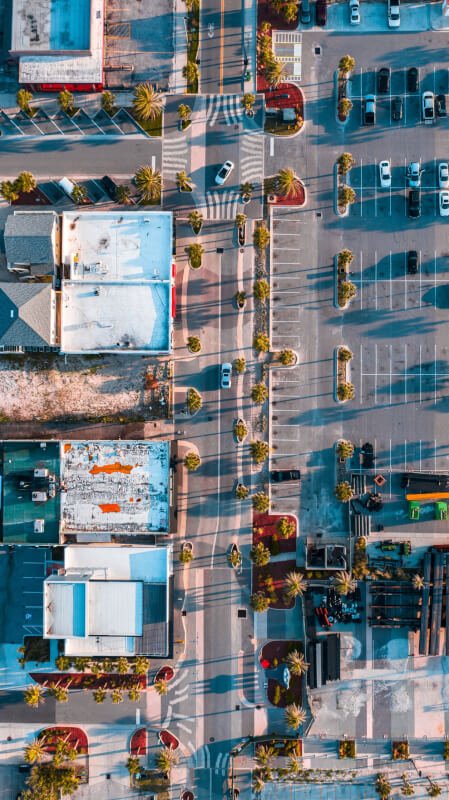
Camera Features
The camera is one of the most crucial aspects of a drone if you plan to use it for photography and videography. Here are some important camera features to consider:
Resolution
The resolution of the camera determines the level of detail in your photos and videos. Look for drones with cameras capable of capturing high resolutions, such as 4K or even 6K. Higher resolutions allow for more flexibility in post-processing and cropping while maintaining image quality.
Field of View
The field of view (FOV) refers to the extent of the scene that the camera can capture. A wider FOV is beneficial for capturing expansive landscapes and aerial shots, while a narrower FOV can be ideal for detailed close-ups. Consider the FOV that suits your shooting style and preferences.
Stabilization
Camera stabilization is essential for obtaining smooth and professional-looking footage. Look for drones with built-in gimbal systems that provide mechanical stabilization to counteract vibrations and movements during flight. This will ensure your photos and videos are free from unwanted shakes or blurs.
Gimbal
A gimbal is a device that stabilizes and keeps the camera level and steady during flight. It allows the camera to tilt and pan independently of the drone’s movements. Look for drones with 3-axis gimbals, as they offer superior stability and smooth camera movements.
Optical Zoom
Optical zoom provides the ability to zoom in on subjects without sacrificing image quality. Unlike digital zoom, which simply enlarges the image using software, optical zoom uses the lens to physically adjust the focal length. This is particularly useful when you want to capture distant subjects or details.
Digital Zoom
While digital zoom is not as desirable as optical zoom, some drones offer this feature as an additional zooming option. Digital zoom enlarges the image using software, which can result in a loss of image quality. Use digital zoom sparingly, as it can degrade the overall sharpness of your photos and videos.
RAW Capability
Having the ability to capture photos in RAW format is a valuable feature for professional photographers. RAW files contain unprocessed image data, allowing for greater flexibility in post-processing and editing. Look for drones that offer RAW capability if you require higher image quality and more advanced editing options.
HDR
High Dynamic Range (HDR) is a technique that combines multiple exposures to capture a wider range of brightness levels in a single photo. This results in more detail in both the shadows and highlights. Drones with HDR capability can produce stunning, well-balanced photos even in challenging lighting conditions.
Low-light Performance
The performance of a drone’s camera in low-light conditions is important if you plan to capture photos or videos during the golden hour or in darker environments. Look for drones with larger image sensors, lower aperture values, and features like night mode or enhanced night vision for better low-light performance.
Lens Quality
The quality of the camera lens plays a significant role in image sharpness, color accuracy, and overall image quality. Look for drones with high-quality lenses made from materials like glass or coated plastics. A good lens will minimize distortion and aberrations, resulting in sharper and more accurate images.
Flight Performance
Flight performance refers to how well a drone handles in the air and the capabilities it offers during flight. Consider the following aspects when evaluating the flight performance of a drone:
Flight Stability
Flight stability is crucial for capturing smooth and steady footage. Look for drones with advanced stabilization systems that can counteract wind gusts and other external factors. GPS and other sensors contribute to flight stability by automatically adjusting the drone’s position and altitude.
Wind Resistance
Wind resistance is an important consideration, especially if you plan to fly your drone in areas with gusty winds. Look for drones with strong motors and aerodynamic designs that can handle windy conditions. Higher wind resistance ensures stable flight and reduces the risk of your drone being blown off course.
Maximum Speed
The maximum speed of a drone determines how quickly it can cover distances and follow moving subjects. This is particularly important if you want to capture fast-action scenes or aerial footage of moving vehicles. Consider the maximum speed of the drone and ensure it aligns with your intended use.
Altitude Limit
The altitude limit of a drone refers to the maximum height it can reach during flight. This limitation is often set by local regulations or the manufacturer. Check the altitude limit of the drone you’re considering to ensure it meets your needs, especially if you plan to fly in areas with altitude restrictions.
Hovering Ability
Hovering ability is an essential feature, especially when you need to maintain a specific position or capture steady footage from a fixed point in the air. Look for drones with precise hovering capabilities, as they will allow you to concentrate on framing your shots without worrying about the drone drifting or moving unintentionally.
Flight Modes
Different flight modes offer various features and functionalities that can enhance your flying and filming experience. Common flight modes include follow me, waypoint navigation, orbit mode, and active track. Consider the flight modes available on the drone and choose one that aligns with your specific needs and creative vision.
Battery Life
Battery life determines the duration of your drone’s flights. Longer battery life allows for more extended shooting sessions without the need for frequent battery swaps or recharges. Look for drones with longer flight times, especially if you plan to capture extensive aerial footage or cover larger distances.
Battery Recharge Time
Consider the battery recharge time of the drone you’re interested in. Shorter recharge times mean you’ll spend less time waiting for your batteries to charge and more time flying. Some drones offer fast-charging options or the ability to swap batteries quickly for uninterrupted flight sessions.
Controller Range
Controller range refers to the maximum distance at which you can maintain a reliable connection between your drone and the remote controller. A longer controller range allows you to fly your drone farther and explore more extensive areas. However, it’s important to follow local regulations and always maintain visual line of sight with your drone.
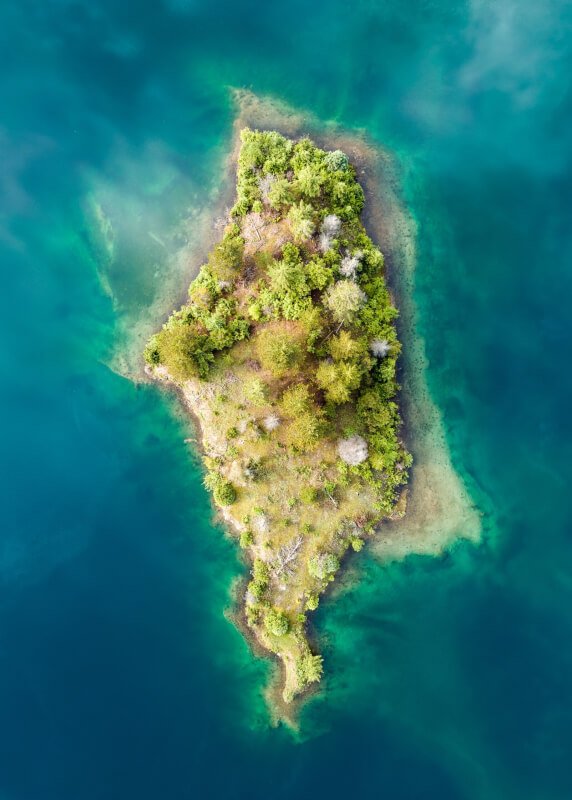
Safety Features
Safety should always be a top priority when flying a drone. Consider these essential safety features when choosing a drone:
Return-to-Home Function
A return-to-home function is a vital safety feature that allows the drone to automatically fly back to its take-off position or a predetermined home point. This feature is useful if the drone loses connection, the battery is running low, or you encounter any emergencies during flight.
Automatic Landing
Automatic landing is another safety feature that ensures your drone lands safely and accurately. Instead of manually controlling the landing process, the drone will autonomously land itself in a designated landing spot. This feature minimizes the risk of accidents or crashes during the landing phase.
Emergency Stop Button
Having an emergency stop button on your drone’s remote controller allows you to quickly and effectively stop the motors in case of an emergency or unexpected situation. This can prevent accidents, damage to the drone, and potential harm to people or property.
GPS Tracking
GPS tracking allows you to track your drone’s location in real-time, which can be helpful in case of a lost drone or flyaway. This feature enables you to pinpoint the drone’s last known location and aids in the recovery process. Some drones also offer geofencing capabilities to prevent flying into restricted areas.
Geo-fencing
Geo-fencing is a feature that creates a virtual boundary or geofence around areas where you’re not allowed to fly or where you want to avoid flying. This can include airports, military bases, or other restricted areas. Drones with geo-fencing capabilities will automatically prevent you from flying into these predefined zones.
Obstacle Detection
Obstacle detection uses sensors to scan the drone’s surroundings and detect potential obstacles in its flight path. This feature can help your drone avoid collisions with objects such as trees, buildings, or other drones. Obstacle detection is particularly valuable when flying in congested areas or during indoor flights.
Collision Avoidance
While obstacle detection warns you of potential collisions, collision avoidance takes it a step further by actively maneuvering the drone to avoid obstacles. Drones with collision avoidance capabilities have advanced sensors and algorithms that enable them to navigate around obstacles automatically. This feature offers an extra layer of safety and helps prevent accidents.
Additional Features
In addition to the essential features mentioned earlier, many drones offer additional features that can enhance your flying experience and creativity. Consider these additional features when evaluating a drone:
Follow Me Mode
Follow me mode allows the drone to autonomously follow you or another subject while maintaining a constant distance and capturing your movements from the air. This feature is popular for action sports, outdoor adventures, and capturing dynamic footage without needing a dedicated camera operator.
Waypoints
Waypoints allow you to pre-program a specific flight path for your drone to follow. This can be useful for capturing cinematic shots, aerial tours, or repetitive surveying tasks. You can set multiple waypoints, adjust the altitude, and specify the drone’s speed for precise and consistent flights.
Point of Interest
Point of interest (POI) mode enables the drone to circle around a specific subject or location while keeping it centered in the frame. This is great for capturing 360-degree views, showcasing landmarks, or creating dynamic shots with a central point of focus.
Live Video Streaming
Some drones offer the ability to stream live video footage directly to your smartphone or other devices. This is particularly useful if you want to share your flight experience in real-time or if you need a remote viewer to monitor the camera feed during flights.
FPV (First Person View)
FPV allows you to see through the drone’s camera in real-time, giving you a first-person perspective of the flight. This can be experienced through a dedicated FPV headset or by using a smartphone or tablet. FPV is popular among drone racing enthusiasts and those looking for an immersive flying experience.
Gesture Control
Gesture control allows you to control your drone’s movements using hand gestures. This feature is great for capturing selfies or group shots without needing a remote controller or smartphone. Simply make specific gestures, and the drone will perform the desired action, such as taking a photo or initiating a specific flight mode.
Intelligent Flight Modes
Intelligent flight modes are advanced features that automate specific flight maneuvers or capture techniques. These modes can include cinematic shots like dronie or reveal, automated tracking of subjects, or even creative tricks like flips and rolls. Intelligent flight modes can add a level of sophistication and creativity to your aerial photography and videography.
Time Lapse
Time lapse is a technique that captures a series of photos at set intervals and combines them into a video sequence. Some drones offer built-in time lapse capabilities, allowing you to capture stunning aerial time lapse footage of landscapes, construction projects, or other changing scenes.
Selfie Mode
Selfie mode is specifically designed for capturing self-portraits or group shots using your drone’s camera. This feature allows the drone to fly to a set distance and altitude, ensuring you are centered in the frame. Selfie mode often works in conjunction with gesture control for convenient and hands-free operation.
Panorama
Panorama mode enables your drone to capture wide-angle or 360-degree panoramic shots. The drone automatically takes a series of photos at different angles and stitches them together to create a seamless panoramic image. This feature is great for capturing breathtaking landscapes or cityscapes from a unique perspective.
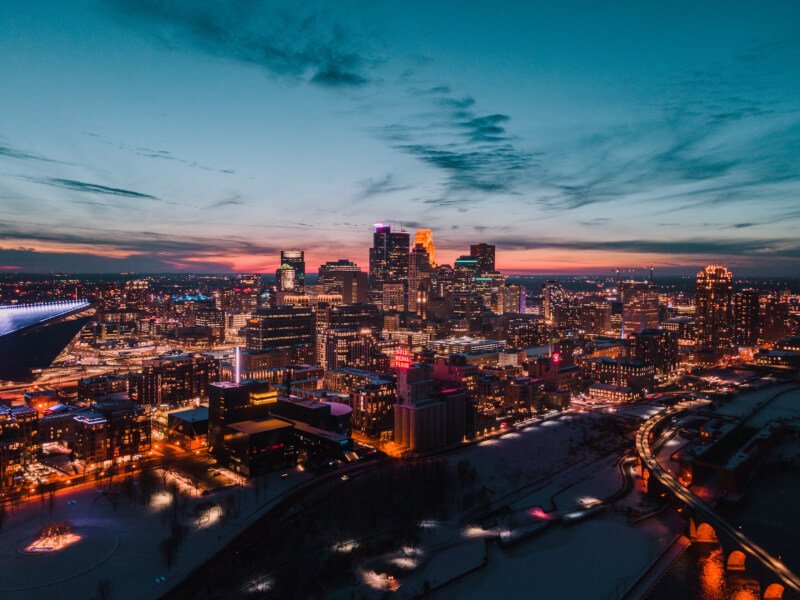
Drone Regulations
Before purchasing a drone, it’s crucial to familiarize yourself with the regulations and laws governing drone usage in your country or region. Here are some key aspects to consider:
Registration
In many countries, drones above a certain weight threshold need to be registered with the appropriate aviation authority. Failure to register your drone may result in fines or legal consequences. Make sure you understand the registration requirements and abide by them to fly your drone legally.
Flight Restrictions
Different countries have various flight restrictions in place to ensure the safety and privacy of individuals. These restrictions may include no-fly zones around airports, military installations, or other sensitive areas. Additionally, there may be restrictions on flying over crowds, near buildings, or above certain altitudes. Always adhere to local flight rules and regulations.
Privacy Concerns
Respect the privacy of others when flying your drone. Avoid capturing footage of people without their consent, especially in private or sensitive areas. It’s important to use your drone responsibly and ethically, considering the privacy and security of individuals and private property.
Insurance
Consider insurance coverage for your drone. Accidents can happen, and having insurance can protect you financially in case of damage to your drone or third-party property. Some countries may have specific requirements for drone insurance, especially for commercial use. Research and choose the right insurance policy for your needs.
Local Laws
In addition to national regulations, some cities or local municipalities may have specific drone laws in place. These laws can include flight restrictions, permits required for filming, or limitations on where drones can be flown. Always check for any local laws or ordinances that may apply to your area of operation.
Popular Drone Models
As you explore the market for drones, you’ll come across numerous models from different manufacturers. Here are some popular drone models that have gained recognition for their performance and features:
DJI Mavic Air 2
The DJI Mavic Air 2 is a compact and lightweight drone that offers impressive flight performance and camera capabilities. It features a 48-megapixel camera, 4K video recording, intelligent flight modes, and a maximum flight time of up to 34 minutes. The Mavic Air 2 is a popular choice for both recreational and professional drone enthusiasts.
Autel Evo II
The Autel Evo II is a professional-grade drone known for its high-quality camera and extensive flight range. It offers various camera options, including a 6K camera capable of capturing stunning aerial footage. The Evo II also boasts a long flight time, obstacle avoidance, and a rugged build, making it suitable for demanding aerial photography and videography tasks.
DJI Phantom 4 Pro V2.0
The DJI Phantom 4 Pro V2.0 is a well-known and highly regarded drone in the professional drone market. It features a 20-megapixel camera with a 1-inch sensor, 4K video recording at 60fps, and a mechanical 3-axis gimbal. The Phantom 4 Pro V2.0 offers advanced flight modes, obstacle sensing, and a reliable control range, making it a favorite among aerial photographers and videographers.
DJI Inspire 2
The DJI Inspire 2 is a professional-grade drone designed for filmmakers and content creators. It features an interchangeable camera system, allowing you to use different cameras depending on your shooting needs. The Inspire 2 offers exceptional flight performance, advanced image processing, and intelligent flight modes, making it a top choice for high-end aerial cinematography.
Parrot Anafi
The Parrot Anafi is a compact and portable drone known for its excellent camera capabilities. It features a 4K HDR camera, 180-degree tilt gimbal, and zoom capabilities. The Anafi is lightweight, easy to carry, and offers a range of flight modes and creative shooting options.
Yuneec Typhoon H Pro
The Yuneec Typhoon H Pro is a hexacopter drone with advanced camera features and flight capabilities. It features an ST16 all-in-one controller, 4K video recording, 360-degree unlimited pan rotation, retractable landing gear, and obstacle avoidance. The Typhoon H Pro is favored by professional photographers and videographers for its versatility and reliability.
Autel X-Star Premium
The Autel X-Star Premium is a consumer-grade drone that offers advanced features and camera capabilities at an affordable price. It features a 4K camera, stabilizing gimbal, intelligent flight modes, and a control range of up to 1.2 miles. The X-Star Premium is a reliable and user-friendly option for beginners and hobbyists.
Yuneec Mantis Q
The Yuneec Mantis Q is a compact and foldable drone known for its portability and built-in camera capabilities. It offers 4K video recording, voice control, gesture control, flight tracking, and automated flight modes. The Mantis Q is an excellent choice for individuals who prioritize portability and convenience.
GoPro Karma
The GoPro Karma is a versatile drone that can accommodate different GoPro cameras. It offers high-quality aerial footage, stability, and ease of use. The Karma features a folding design, meaning it can be easily transported and stored. Additionally, the Karma comes with a detachable handheld stabilizer, allowing you to capture smooth footage on the ground as well.
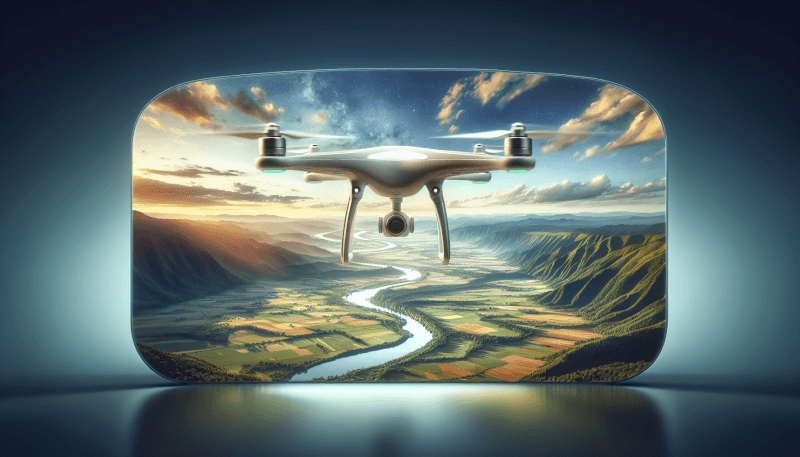
Reviews and Comparisons
When researching drones, it’s helpful to read professional reviews, user reviews, and conduct comparative analysis. Here are some reliable sources you can consult:
Professional Reviews
Professional drone review websites and publications offer detailed insights and unbiased assessments of various drone models. These reviews often cover performance, camera capabilities, flight features, and user experience. Popular professional review sources include Digital Trends, DroneDJ, DPReview, and PCMag.
User Reviews
User reviews are valuable resources as they provide firsthand experiences and opinions from individuals who have purchased and used specific drone models. Websites like Amazon, Best Buy, and B&H Photo Video feature user reviews that can help you understand the pros and cons of different drones and how well they meet users’ expectations.
Comparative Analysis
Several websites and YouTube channels specialize in comparing and contrasting different drone models. Comparative analysis reviews provide side-by-side comparisons of specifications, features, and performance. Such analysis helps make informed decisions by highlighting key differences between drones. Check out channels like DroneDJ, Tom’s Guide, and iPhonedo for detailed comparative drone analysis.
Online Forums
Online drone communities and forums are great places to connect with other drone enthusiasts and gather insights from experienced pilots. Platforms like DJI Forum, Reddit’s r/drones, and DronePilots are active communities where you can ask questions, participate in discussions, and learn from experienced users.
Social Media
Social media platforms like Facebook, Instagram, and YouTube have thriving drone communities. Following drone enthusiasts, professional photographers, and videographers on these platforms can provide inspiration, tutorials, and firsthand experiences with different drone models. Popular drone-related social media accounts include DJI, Drone Vibes, and Drone U.
Final Considerations
While narrowing down your options, there are a few final considerations to keep in mind:
Warranty
Check if the drone manufacturer offers a warranty or guarantee for their product. A warranty can provide peace of mind and protection against manufacturing defects or malfunctions. Understand the terms and conditions of the warranty and any additional coverage options available.
Customer Support
Consider the level of customer support offered by the manufacturer. Look for companies with responsive customer support teams that can assist you with technical issues, troubleshooting, and additional information. Good customer support can make a significant difference if you encounter any difficulties during your drone ownership.
Upgradability
Consider the upgradability of the drone you’re interested in. Some drones allow you to upgrade components like cameras, gimbals, or even flight controllers, ensuring that your drone can adapt to future advancements in technology. Upgradability can extend the lifespan of your drone and provide flexibility as your needs and skills evolve.
Price/Value Ratio
Consider the price/value ratio when evaluating different drone models. While it can be tempting to opt for the most expensive or feature-rich drone, it’s essential to choose one that offers the best value for your specific needs and budget. Consider the overall package, including the drone’s performance, camera capabilities, and included accessories.
Brand Reputation
Take into account the reputation of the brand and manufacturer. Established drone manufacturers like DJI, Autel, and Yuneec have a proven track record of delivering high-quality products and ongoing customer support. Choosing a reputable brand ensures that you’re investing in a reliable and trustworthy product.
By considering these factors, exploring different drone types, understanding camera features and flight performance, reviewing safety features, and evaluating additional features, you’ll be equipped to choose the best drone for your photography and videography needs. Remember to stay informed about regulations and laws governing drone usage in your area and keep safety at the forefront of your flying endeavors. Happy droning!
